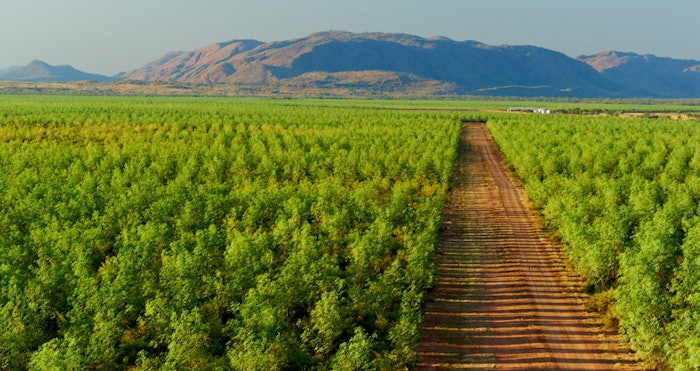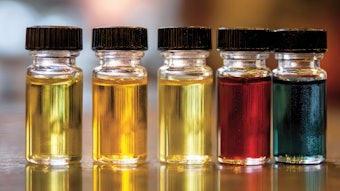
It’s safe to say naturals are the original muse of the fragrance industry—and the muse for synthetics. Without naturals, we would be unable to synthesize botanicals to formulate into commercial products we use every day. Synthetics certainly have their place in fragrance and cosmetics, but when it comes to the clean beauty and wellness industries, naturals reign supreme. Ingredient efficacy, provenance and sustainability are critical to conscious consumers looking for authentic storytelling on product labels. Through sustainable harvesting practices in Australia and ongoing clinical studies on active compounds, Indian sandalwood’s (Santalum album) efficacy in fragrance, cosmetics and pharmaceuticals embeds itself into ethical wellness.
Naturals are certainly the dominant, if not leading player in the booming wellness movement. By 2027, the global wellness market is expected to reach USD 97.4 billion at a CAGR of 6.9%a. Natural fragrance ingredients are included in this boom. By 2027, the global fragrance ingredients industry is expected to rise to USD 16.1 billion by 2027, compared to USD 13.6 billion in 2019b.
The focus on transparency and wellness has extended to the use of natural products and consumer desire to support businesses choosing sustainably sourced, natural materials. Known for its multi-faceted benefits, interest in Indian sandalwoodis rising. By the end of 2026, the global sandalwood market is expected to reach USD 26.8 billion from USD 22.5 billion in 2020c. Paired with research on compounds and ecologically sound harvesting methods, this ancient oil is given a chance to thrive in today’s marketplace.
Multi-faceted Benefits
Also known as white sandalwood and East Indian sandalwood, the Indian sandalwood tree is composed of hundreds of naturally occurring chemical compounds. “We let nature do her job and she supplies us with a complex, multifaceted, bioactive ingredient which synthetic materials simply cannot replicate,” explains Dr. Danny Hettiarachchi, Quintis Sandalwood’s Product Manager.
Indian sandalwood possesses over 125 chemical compounds which cannot be replicated by human methods. So complex are these compounds, research is still exploring the benefits and applications of each element—meaning there are unique properties that are yet to be fully understood by modern science. In terms of function, natural sandalwood is reported to be beneficial on skin as an adaptogen, anti-inflammatory and anti-microbial—whereas synthetic alternatives, which have made progress in cosmetic benefits, are still unable to replicate the total bioactivity of its natural counterpart.
Although the fragrance of Indian sandalwood can be mimicked by synthetic alternatives, human creation is limited compared to nature’s own methods in developing complex olfactory profiles.
Continue reading how naturals can’t be replicated by synthetics.
Disclaimer:
The above paid-for content was produced by and posted on behalf of the Sponsor. Content provided is generated solely by the Sponsor or its affiliates, and it is the Sponsor’s responsibility for the accuracy, completeness and validity of all information included. Perfumer & Flavorist takes steps to ensure that you will not confuse sponsored content with content produced by Perfumer & Flavorist and governed by its editorial policy.










